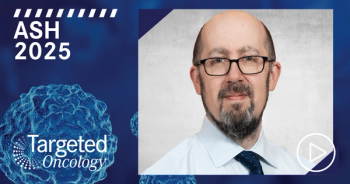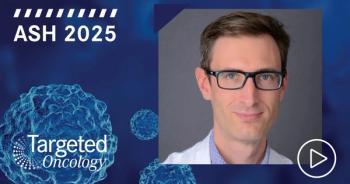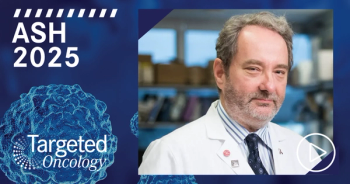
Dr Jimenez Jimenez on Increasing Transplant Access Through Mismatch Donors
Antonio Jimenez Jimenez, MD, discusses the ACCESS trial of PTCy-based GVHD prophylaxis after mismatched unrelated donor stem cell transplantation.
Antonio Jimenez Jimenez, MD, associate professor of medicine, Division of Transplantation & Cell Therapy, at Sylvester Comprehensive Cancer Center, University of Miami Miller School of Medicine, discusses updates from the ACCESS study (NCT04904588) of posttransplant cyclophosphamide (PTCy)-based graft-vs-host disease (GVHD) prophylaxis in patients who received a mismatched unrelated donor graft stem cell transplant.
The ACCESS study is part of the Donor for All Program led by NMDP, which is an initiative working to increase the number of patients able bone marrow transplants through partially matched donors while maintaining optimal outcomes comparable to fully matched transplants.
Jimenez Jimenez explains that this was a phase 2, multicenter, nonrandomized trial evaluating allogeneic transplants for patients receiving mismatched unrelated donor grafts. A current 145 patients are being reported on, with more data to come.
Patients had a mismatch of 7 of 8 or less , and all adult patients received peripheral blood stem cells. Every patient received the same prophylactic regimen, with approximately half of patients undergoing myeloablative conditioning and half receiving reduced intensity conditioning.
The median donor age was 23 years, with an upper limit of 35 years.
A significant finding was that 59% of patients self-identified as an underrepresented group. This highlights the study's success in expanding access to transplant options for historically marginalized patient populations.
The study showed encouraging outcomes, with results comparable to those seen with fully matched donors. For the myeloablative conditioning group, one-year survival was over 80%, and 1-year survival was close to 80% in the reduced intensity conditioning group. Acute grade 3/4 GVHD incidence was low, with 8% in the myeloablative conditioning group and 10% in the reduced intensity group. Moderate/severe chronic GVHD was also low, at around 10%.
A crucial finding was that there was no significant difference in survival between patients with a single antigen mismatch (7/8) and those with greater mismatches (6/8 or less). This is highly significant because being permissive to higher degrees of mismatch could allow for identifying a suitable donor for virtually any patient, regardless of their race or ethnicity. This expanded donor pool also allows for optimization of non-HLA factors, such as choosing younger donors and considering factors like the absence of antibodies, CMV match, or ABO match.
This research demonstrates that using mismatched unrelated donors can expand access to transplantation for diverse populations while achieving outcomes comparable to fully matched donors. It also allows for the selection of potentially optimal donors based on factors beyond HLA matching alone.









































